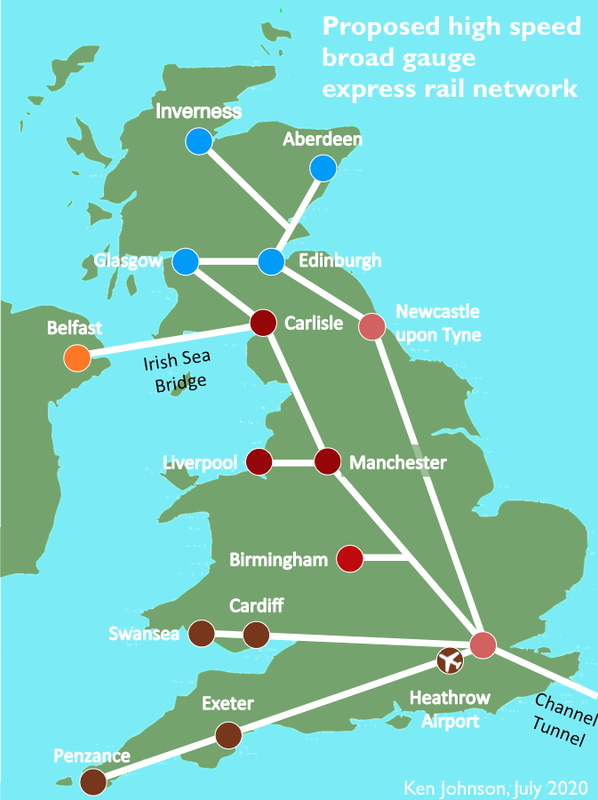
One hundred and seventy five years ago, in 1845, the Royal Commission on Railway Gauges made a serious error of judgment. They decided that in future any new railway in Britain (but not Ireland, the whole of which was then part of the UK) would be built to the ‘standard gauge,’ that is, a distance between the rails of 4′ 8½″.
The Commission continued to sit and issue reports from time to time (no point wasting a good sinecure) and in 1893 they compounded their error by ordering that the Great Western Railway re-gauge its 177 mile long main line from London to Bristol and Penzance to ‘standard gauge’. The genius Isambard Kingdom Brunel, the chief engineer of the Great Western Railway, completed the re-gauging work in the space of a three day Bank Holiday week-end, beginning on 21 May 1892 and finishing on 23rd, a feat of engineering and project management which, I suspect, could not be done today.
The present debate about the need to build a special high-speed railway line, HS2, would not have come about if the Commission's decision had gone the other way and all the railways in Britain, except the Great Western and some narrow-gauge mining lines, had been re-gauged to Brunel's broad gauge of 7′ 0¼″, half as wide again as the standard gauge. We would probably be taking 200 mph train services for granted.
There are several ways of increasing the speed of a train service. You can reduce the load, for instance by building carriages out of lightweight materials. You can speed up the train, for instance putting a second locomotive at the back of the train. You can speed up the schedule, for instance by leaving out some station stops. Or you can speed up the track.
HS2 requires the building of completely new track. (Here is a map of it.) But there is a cheap alternative, which is to bring back the broad gauge on the routes that you want to accelerate.
Brunel's broad gauge Great Western services to London were noted in their day for going faster and giving a smoother ride than other main line competitors. This is not coincidence. Research carried out a century after Brunel's broad gauge was abandoned showed the relationship between track gauge and maximum speed. Many factors affect the maximum speed of a train on a track — gradient, curvature, weight and power — but other things being held constant, the greater the track gauge, the higher is the speed at which the train becomes unstable on the rails, and the wheels begin to ‘hunt’ from side to side. The speed at which the wheels begin to hunt is the train's maximum speed. There is an explanation of what keeps a train on the track in this Scientific American article, Train Wheel Science, and a full discussion of ‘hunting’ in this Wikipedia entry, Hunting Oscillation.
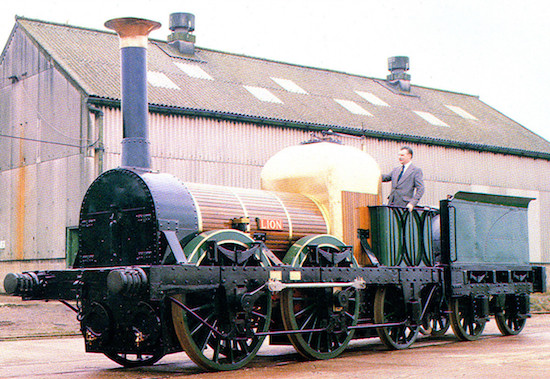

Speed and journey times.
 The target to beat is a journey time from London to Birmingham, 101 miles, of 52 minutes,
since that is the expected journey time on HS2. That would require an average speed
of 117 mph.
Trains can only accelerate gently, at a maximum of 0·1 g
(3·2 ft.sec⁻²,)
otherwise any standing passengers will fall over and hurt themselves.
Therefore the maximum speed has to be appreciably higher than the average speed.
You need a maximum speed of 175 mph to travel 101 miles from a standing start to
a standing finish in 52 minutes.
The target to beat is a journey time from London to Birmingham, 101 miles, of 52 minutes,
since that is the expected journey time on HS2. That would require an average speed
of 117 mph.
Trains can only accelerate gently, at a maximum of 0·1 g
(3·2 ft.sec⁻²,)
otherwise any standing passengers will fall over and hurt themselves.
Therefore the maximum speed has to be appreciably higher than the average speed.
You need a maximum speed of 175 mph to travel 101 miles from a standing start to
a standing finish in 52 minutes.
Since the German ICE 3 train achieves a maximum speed of 206 mph in service on standard gauge track, and the Italian Frecciarossa achieves 187 mph, a maximum speed of 175 mph on broad gauge track does not appear over-ambitious. The difference is that ICE 3, Frecciarossa and the French TGV all run on specially built track. The broad gauge trains which I am proposing here run on existing track with modifications and, in general, require little by way of land acquisition.
The same maximum speed and acceleration suggest that the journey from London to Edinburgh, 440 miles, would take 3 hr 43 min, (118 mph) compared with the current fastest time of 4 hr 20 min (101 mph.)
Construction of HS2 is due to finish in the year 2035, so the development time for a broad gauge network has to be similar.
Broad gauge trains run on two rails seven feet apart, but that doesn't mean that Network Rail will need to rip up thousands of miles of standard gauge track and re-build it. It is sufficient to add a new rail to standard gauge track, like this:
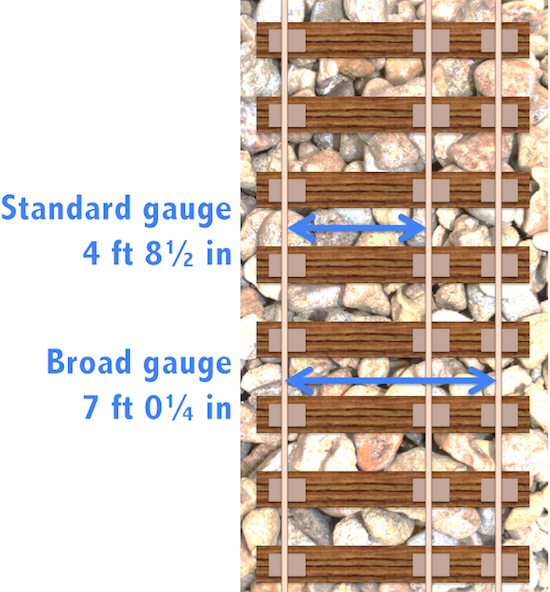
Dual gauge track is not unusual in many countries, though as far as I know there is none anywhere in Britain except for some replica track at Didcot Railway Museum. Greece and Switzerland, for example, have dual metre/standard gauge lines.
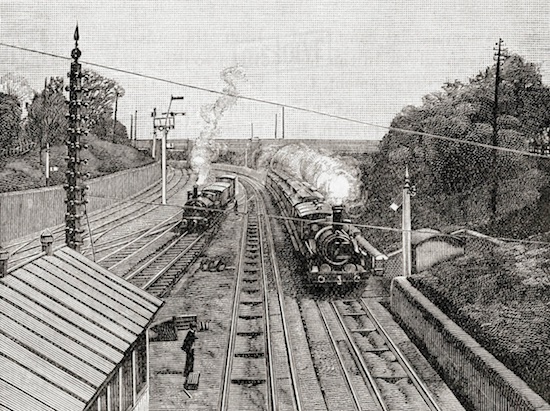
With careful attention to the profiles of broad gauge rolling stock, it should be possible to fit the broad gauge track under existing gantries, bridges and tunnels. Where platforms are adjacent to the common rail, they may be used unchanged, although platforms on the other side of the track will need re-locating, or a special track formation to allow standard gauge track to stop at them.
It is worth mentioning that Talgo technology allows a train to change from one track gauge to another as it moves. Adopting Talgo technology on broad gauge trains would mean that a train could leave the broad gauge and travel on a standard gauge line for reasons such as diversions. Talgo uses wheels mounted on square axles and track arrangements that change the gauge of the train as it travels.
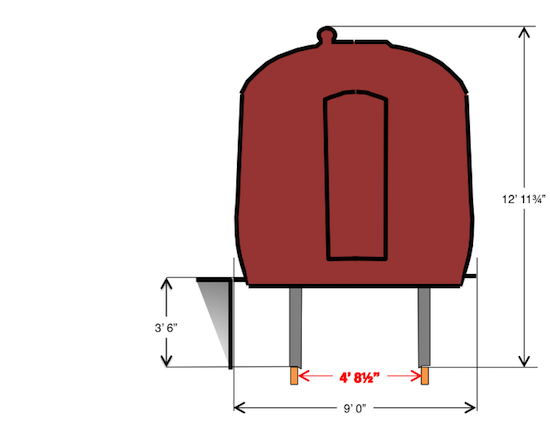
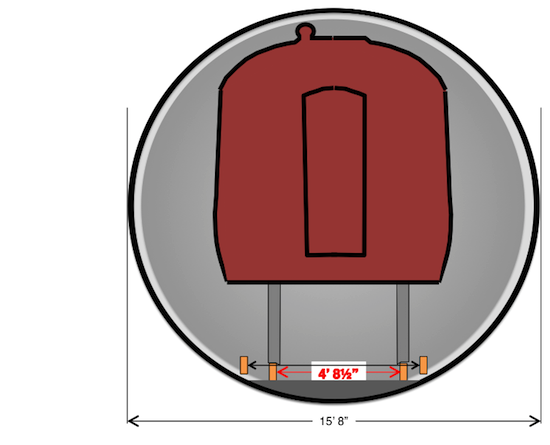

Estimated costs.
 These are back-of-a-fag-packet figures, but we live in a world where
any estimate of costs is considered better than none.
(Ask Diane Abbott if you don't believe me.)
In general there is very little
land purchase cost, because the broad gauge track is achieved by
dual gauging existing standard gauge track and keeping down the cost of
re-building gantries, tunnels and bridges by designing broad gauge trains
to fit within the present standard gauge clearances.
These are back-of-a-fag-packet figures, but we live in a world where
any estimate of costs is considered better than none.
(Ask Diane Abbott if you don't believe me.)
In general there is very little
land purchase cost, because the broad gauge track is achieved by
dual gauging existing standard gauge track and keeping down the cost of
re-building gantries, tunnels and bridges by designing broad gauge trains
to fit within the present standard gauge clearances.
The cost of the proposed bridge across the Irish Sea is excluded, because the bridge is a separate infrastructure project and not in general financed by the railway.
It is possible to give an idea of the cost using figures from the report Guide to Railway Infrastructure Costs on the cost of recent reconstructions of railway lines. Those where the cost is expressed per mile range from £4½M per mile for the re-opening of Wisbech to £11M per mile for the Borders Railway including all infrastructure. The schematic diagram at the top of this page shows 1700 miles of dual gauge track, meaning the cost at 2020 prices might well lie between £8Bn and £14Bn.
It is estimated that a half hourly high speed service on each route could be provided by 68 trains. 68 broad gauge diesel locomotives cost about £136Mn (Railway Technical) and 12 passenger carriages per train cost in total about £122Mn (Transport Watch.)
A discussion of the cost of adapting the track and building broad gauge rolling stock begs the question of whether the adaptation should be carried out as a single project over, say, fifteen years like HS2, or whether it could be carried out in stages as different lengths of track take their turn to be renewed or repaired so that the dual gauging is done in an opportunistic way over, say, 100 years, or as long as it takes. Railways have been with us for all but 200 years and some projects have been carried out opportunistically, such as the electrification of the network, which could be said to have begun with the Volks Electric Railway as long ago as 1883, and which is still not complete. (There is an interesting precedent for this approach. In 1920 the Dutch government took a decision that where a road was renewed or replaced, the replacement would include a cycle track. After 100 years the Dutch road network is unique in its generous provision of cycle tracks.)
Opportunistic dual gauging reduces the cost greatly by taking advantage of workers and machinery which would have been in place anyway. It also raises the possibility of increasing the loading gauge.
Loading gauge. An opportunistic dual gauging policy could also include the raising of the loading gauge. This proposal suggests that the locomotives and passenger carriages of broad gauge stock should fit inside existing clearances, so as to avoid the need to enlarge bridges and tunnels. This includes the clearances for tilting trains, which are more comfortable at high speed, but have to be built so as to fit inside the same clearance as trains that don’t tilt.
The British railway network was the first in the world and, therefore, made all the mistakes. One of these was setting the maximum vertical height of a train at 12′ 6″. Other countries set their loading gauges higher, meaning that they were able to increase the capacity of a train by running double deck carriages.
The British Great Central Railway was built to Continental clearances and would today have offered faster and bigger trains between Manchester and London, but absurdly it was closed by Marples and Beeching in stages ending in 1969.
As was observed at the time, ‘surely the prize for idiotic policy must go to the destruction of the until recently most profitable railway per ton of freight and per passenger carried in the whole British Railways system, as shown by their own operating statistics. This railway is of course the Great Central’ (Daily Telegraph, 28/09/1965)
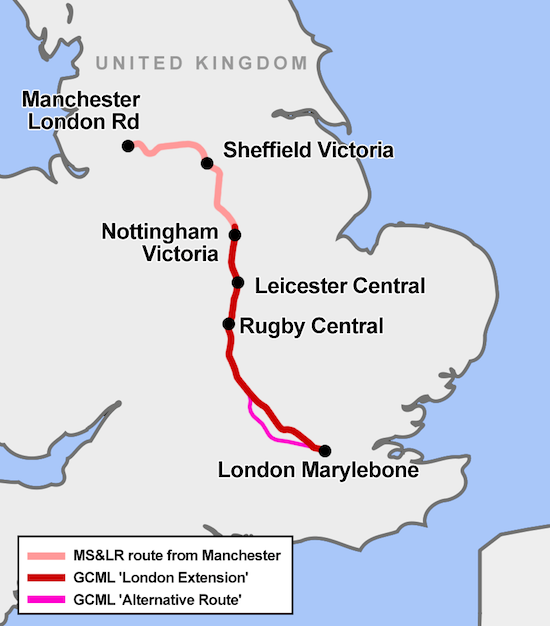
The closest that British railways have come to a double deck train is the 4DD class electric multiple unit, which had interleaved upper and lower decks and ran on the Southern Region in the 1950s.
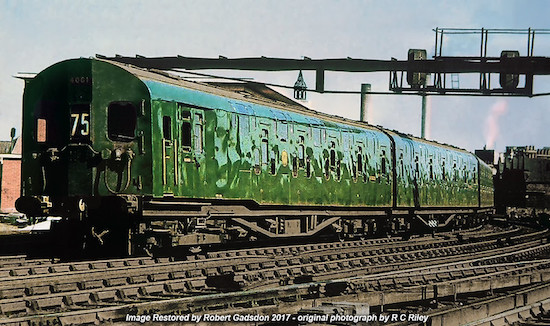

American Superliners take advantage of the high loading gauge of 16′ 6″ in the western states. European railways have a slightly lower loading gauge, but still big enough to allow the operation of double deck trains.

By permitting the re-gauging of the tracks and the increasing of vertical clearance to take a very long time, opportunistic enlargement of bridges, tunnels and gantries will allow double deck trains to operate on the British main line… but not until about the year 2120.
An express passenger train on the new broad gauge network might then look like this:

No comments:
Post a Comment